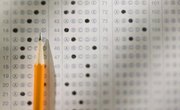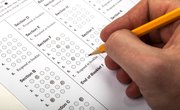Assessments are a part of every child's educational journey and children are not the only people to be tested. Students in college, graduate school and those attaining a doctoral degree are also assessed on their knowledge and its application to a real-world situation. There are two main types of assessments, one of which is a summative assessment.
Description
A summative assessment is a more formal method of testing student knowledge about a previously learned concept or unit of study. This type of evaluation is also commonly given at the end of the quarter, during the middle of the year and as a final, cumulative exam. Summative assessments give the instructor an idea of how much content the students have retained and may use the results to determine effective learning and teaching techniques for the class.
Types of Summative Assessments
End-of-unit tests, final exams, mid-term exams and quarterly tests are considered summative assessments. Many state departments of education devise a state-mandated evaluation and compare the results according to the state standard benchmark to determine the effectiveness of teachers in each district, which is also a summative assessment. Sometimes, these summative assessments determine the amount of funding allotted to the district. For example, the Pennsylvania System of School Assessment is given to students in grades 3 through 12 annually in different subject areas, according to state standards of achievement.
Examples
Summative assessments take many forms, including multiple-choice, true-or-false, concept vocabulary matching, fill-in-the-blank and short-answer question tests. One summative assessment may contain a combination of these types of questions or can be comprised exclusively of one type of question. Essay questions or tests are another example of summative assessments, as are performance evaluations. Performance tests may include subject-specific presentations, portfolios, written papers and any other method used to assess student knowledge.
Summative vs. Formative Assessments
Formative assessments are the other main type of assessment that also evaluates student learning but is often more informal. It includes quizzes, projects, answering questions in class and via teacher observation. Summative assessment is a formal method of evaluation and does not take into consideration teacher opinion like some methods of formative assessment. Summative exams end with an exact grade while many student-created projects are more difficult to assess.











